|
Herbstalk has been on pause for a while, but thanks to the energy and enthusiasm of some new team members we can continue on, re-invigorated! Here are our lovely organizers for the upcoming Wintergreen Market: 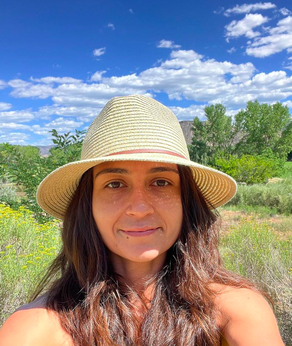 Hi Herbstalk Community! My name is Vicki (Victoria Sargsyan) and I'm taking on a lot of the planning and organization work of Herbstalk, working with @steph_zabel and another new teammate (who you will meet soon...), and am running our social media accounts. You can also expect to find me on the other end of our email address (info@herbstalk.org) I met Steph about 8 years ago, when I started working at @cambridgenaturals - and learned about the Herbs for Everyday Living classes she was hosting in the city. Those were such a gift to discover! Most of what I know about working with herbs, I have learned from Steph, so I am immensely thankful and excited to be working with my teacher turned friend in creating a gathering for our community💕 Connecting people to each other, and supporting people in sharing their passions is what gives me energy (life force? 😊). I’m looking forward to re-connecting with everyone I know, and meeting all those that I have yet to meet🫶🏼 🧿 Fun facts about me 🧿 🇦🇲 I moved to the United States from Yerevan, Armenia 21 years ago. 📖 I can speak three languages: English, Armenian and Russian. 🐱 I have a cat that I love with all my heart @rhubarb.thecat 🌳 I have worked at Cambridge Naturals for over 8 years now! Check out our almost weekly events! 🌸 Last year I took Steph and Jenny's @livinglandcourse at @muddyriverherbals and it was THE BEST TIME! You can find me at @vika.vicki.victoria if you’d like to keep in touch! 💫 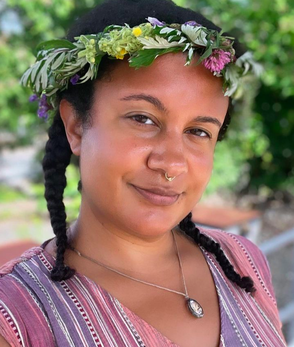 Hello everyone! My name is Brandie (she/her) and I am so excited to be part of organizing this event with Steph and Vicki. I’ve been in the herbalism world since 2018 after seeing a flyer at Make Shift Boston (RIP) for a POC Herbalism Apprenticeship called Seed Root and Bloom. For 9 months we gathered once a week for a weekend to learn about plants, the physical and energetic properties and how their medicine can help hold us and heal us. Ever since then I have been interested in learning about plant medicine from all over the world. I’ve done other apprenticeships and currently have the honor of attending the @LivingLandCourse in Canton where I met Steph. When I found out she founded Herbstalk I was giddy with excitement at the possibility of helping organize it’s return! And now that it is happening!!! Ahh!!!! As a former Somerville resident (now currently living in Brighton), I remember seeing the Herbstalk community gardens pop up around 2018 and accidentally finding Herbstalk at the Armory on a walk I took one day, unsuspectingly. I’ll be leading the BIPOC space and workshops and doing a couple other fun side projects. More on that later!! 🌱More about me🌱 🌱I’m a Bostonian, from Dorchester. 🌱My plant ally is mugwort 🌱I love corgis, boba tea, learning about different cultures + languages and cooking! 🌱I like high femme looks, make up and the color pink. Kuromi and Hello kitty everything💞 🌱My favorite TV shows are: Buffy, Star Trek TNG, Call The Midwife and Crash Landing On You 🌱 I’m a nanny and love infants to young toddlers and caring for them. 🌱I’m vegan and gluten free Thank you for reading! I look forward to meeting everyone in November! I can be reached on my account @Boba_bitch420 as well as my email: mugwortrising@gmail.com 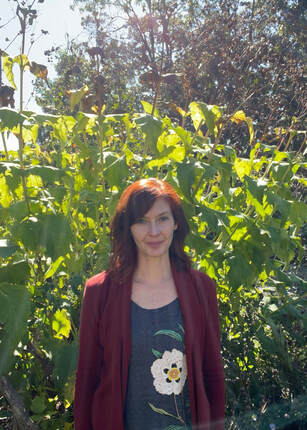 Dear Community, it’s Steph Zabel here. I’ve realized that in the 10+ years of leading Herbstalk I’ve never really introduced myself. I prefer to remain behind-the-scenes, but here I am — hello! I’m a teacher, student, writer, gardener and mother. For over a decade I’ve taught home herbalism; now much of my work is focused on sharing ways to connect with the earth, her seasons, and solar & lunar cycles. I am the founder of Herbstalk, and since 2011 it has been an immense joy and honor to put together these events for the community. I took a pause for the past two years, but now, thanks to the enthusiasm and hard work of Vicki (taking on event logistics & social media) and Brandie (heading the BIPOC led art & educational space) Herbstalk can continue on, re-invigorated. I am so grateful to work with these two amazing women — they have hearts full of fire and love.✨ In these times — when we are collectively witnessing so much suffering and divisiveness — it is essential that we come together in spaces that hold, honor and reflect all people. And so for me, the most important aspect of Herbstalk is how it FEELS: I want each person who walks through the door of an event to feel a sense of belonging & welcome, warmth & inspiration, shared joy & vibrant community. While it’s certainly a place for our minds to learn about the botanical world, even more so Herbstalk is meant to be a place where our hearts can find other hearts to connect with. Many thanks for all your support, and for celebrating the return of Herbstalk with us! Some fun facts: 💚 Although I grew up mostly in South Carolina and Texas, I’ve lived in Spain, Mexico, Dominica, the United Kingdom and Saudi Arabia. 💚 My Myers-Briggs personality type is INFJ (which is probably why it is excruciatingly difficult for me to share anything personal on social media!…) 💚 I’m learning how to play the Celtic harp - a dream! 💚 I almost always read non-fiction books. 💚 My vices are: salt & vinegar chips and Irish whiskey. 💚 I adore crows, rain, autumn and dim lighting. 💚 You can learn more about my writing and classes at: @steph_zabel and @livinglandcourse  Hello Herbstalk Community! So lovely to reconnect and see you again. This is Henry Kesner - Herbstalk Co-Founder and "Chief of Practicality". I had the joy and honor launching Herbstalk with Steph and watching it grow and blossom in these 10+ years - thanks in large part to all our wonderful teachers, vendors, volunteers, neighbors, family members and community sponsors who each contributed in so many ways! I am often found running around behind the scenes to ensure Herbstalk events run seamlessly for our amazing community and attendees. You may remember me as the person who would hop on the mic from time to time to welcome you to the event or orient you to the various classes, plant walks and demos or to shamelessly promote my band playing in the lobby… Well… behind the mic is a person who has loved plants and the natural world his whole life and who wants to find ways to share this passion and knowledge - all while making it accessible. I am deeply committed to the Herbstalk mission and constantly looking for ways to scale and reach others. My background is in all forms of education - from museums to higher-ed to open access online learning. For me, Herbstalk is a wonderful way to explore the plant world while establishing and strengthening various forms of community connections. I am so thrilled to see Herbstalk back and look forward to seeing you at our next event! Some fun facts: 💚 I was born on a mountain top in Tennessee 💚 My Myers-Briggs personality type is ENFP (which makes me an ideal match for a certain Herbstalk co-founder ;)) 💚 I play percussion and sing 3rd part harmonies in that band I shamelessly promoted above 💚 I came up with the name for Herbstalk. Yup, I said it. 💚 My happy place is the Middlesex Fells. Even better if our daughter is on my shoulders. 💚 Until this year I had curated the Herbstalk playlist - mostly Motown inspired, given my Detroit roots/connection. 💚 I LOVE to help and gather feedback. Please let me/us know what we can do to improve the Herbstalk experience! A note from Herbstalk’s founder, Steph ZabelHello dear community, It’s been quite a while since there have been any Herbstalk updates, and I very much apologize for that. As we approach the first weekend in June (which from 2012 to 2021 was always the Herbstalk weekend at the Armory) I wanted to share some thoughts on where we are in regards to hosting events. People have been reaching out to ask if Herbstalk is still in existence, and are wondering about what’s next. I really appreciate everyone who checks in about the events — I’m so glad that it’s something that people remember fondly. And I’m sorry that I haven’t been more communicative over the past year and a half with updates. To be honest, as a private, introverted person I struggle with social media and how much to share on a personal level. I’ve always wanted the Herbstalk platform to be focused on all the wonderful and inspiring herbalists, teachers, crafters, partners and participants of the events, and not on the behind-the-scenes stuff. I didn’t think it was necessary to share about the private workings of Herbstalk, but now I realize that it might be helpful for those who want to understand why things have been put on pause for so long… I think that it has sometimes appeared that Herbstalk is a larger organization than it actually is, and is/was managed by a team of people. And while that is certainly true during the actual events — there are so many amazing and generous friends, family, volunteers and community partners who have been essential to running the day — the bulk of the work throughout the nitty gritty planning process was done by me over all these years. I’ve always seen this as a weakness of Herbstalk — that its existence essentially hinged upon one person. I also feel that it’s a personal failure of mine to have not been able to figure out a way to make it a viable and sustainable organization that could exist if I couldn’t coordinate it. I wish I had found a way. It was a labor of love to put on these events for the community, and such a tremendous joy to see how Herbstalk was received and the impact it had. For me this work was full of service and purpose and I was very happy and honored to do it. But since it was always a homespun and scrappy affair its unexpected popularity and growth — while very lovely and gratifying — was difficult at times. After a decade of running two to three events per year, including some experiments going virtual, I was feeling weary. Along with the pandemic, parenting a young child, keeping my own individual herbal business going, navigating personal struggles and sorrows, and the general intensity of the times we live in, I was burned out. At the beginning of 2022 I decided to take a break and regroup. I thought that taking the year off would re-energize me and offer some sort of epiphany about how to go forward with Herbstalk in a more sustainable way. Part of me also hoped that someone would come forward to take the reins for running the events. But neither of these things happened, and now that it is June 2023 I am still not clear about what’s next. While I certainly don’t want to let anyone down or abandon the vibrant community that was formed around Herbstalk, I know that it was necessary for me to step back, take time to rest, and to work on my own personal healing. So, all this is to say that Herbstalk is still existing in the ethers for now, as an idea and a memory, and hopefully one day as a new spark. I have not called it quits for good, but neither have I decided what’s next. One thing I do know with great certainty: whatever I create from my heart must be out of joy and enthusiasm rather than a sense of obligation. That’s how this gathering was born — from a feeling of exuberant inspiration and love — and that’s the feeling I always wanted every person to have when they walked through the door. Because Herbstalk was always meant to be for the community, for the general public, for all people who love the natural world perhaps it’s now time for others to envision the next iteration of this gathering if it is to continue. I am very open to help and suggestions, particularly to any serious inquires from people who would want to take on the planning logistics and responsibilities going forward. It would need to be an individual or — even better — a group of people who can be committed to seeing Herbstalk through for another decade. Or, perhaps it’s a non-profit organization who wants to take Herbstalk under their wing. There are many possibilities that could happen… But at this point I know I can’t be the only one steering this beautiful but unwieldy ship. Please reach out by email if this might be you (please don’t message me via instagram or facebook since I don’t spend much time there, and serious inquiries and ideas only, please.) In the meantime, I’m looking forward to reconnecting with the community in other ways. And if you want to keep in touch with my other work and happenings you can do so through @steph_zabel and @livinglandcourse. I promise I’ll keep everyone updated if and when things change, and if there are plans about new Herbstalk events. I truly miss the warmth and love and magic that was created when so many plant people gathered together in one place, and I hope that it will return again, in one form or another. Much love, Steph by Ray Lardie The cooling temperatures, the changing leaves: the end of October brings Samhain to mind for many people, but this ancient holiday was not celebrated in many parts of Europe. In Russia, a different holiday falls at this time of year: the Feast of Paraskeva. Who is St. Paraskeva? Who is Mokosh’? The Feast of Paraskeva occurs on October 28th and honors Saint Paraskeva, a martyr saint whose name means Friday. The Saint Paraskeva is venerated in Russia, however, took on many aspects of the Slavic earth goddess Mokosh’, also known as Mat’ Syra Zemlya, Damp Mother Earth. Thus in Russia and some other Slavic countries, Saint Paraskeva is associated with the earth, water, fertility, textile work like weaving and embroidery, childbirth, the home, and herbs, among other things. Crossroads and sacred springs were often sites of her chapels—both clear connections to Mokosh’. In fact, Saint Paraskeva is often depicted in Mokosh’s traditional pose: elbows bent, hands held up in blessing. How is the day celebrated? Rest: Folklore surrounding the holiday tells us more about what traditionally wasn’t done. Out of respect for Saint Paraskeva and thus by extension Mat’ Syra Zemlya, people didn’t weave, embroider, sew, or pursue other textile arts on the Feast of Paraskeva. In fact, one was supposed to take a break from textile arts on Fridays generally, or risk a warning punishment in the form of arthritic pain in the hands, eye irritations, or worsening sight—all maladies that would make textile crafts much more difficult. Offerings: Aside from resting from work, people would make offerings of flax skeins by tossing them into a well or one of Paraskeva’s sacred springs. That does neatly remove the ability to spin! If you don’t happen to have a skein of flax fiber, tossing coins is also acceptable. Purification: It was also a time to purify and bless one’s house and animals by sprinkling them with water, ideally from a sacred spring. Wedding Wishes: Mokosh’ is said to oversee autumn, so it’s no surprise that Paraskeva would be addressed by women seeking to marry. Traditionally, the autumn wedding season began two weeks before the Feast of Paraskeva on the Feast of Pokrov, and the two were addressed together in a prayer: Father-Pokrov, Mother-Paraskeva, cover my head with a bridal veil, with a married woman’s headdress. Paraskeva Herbs The other name for the Feast of Parakeva is Paraskeva-l’nyanitsa, Paraskeva the Flaxen, since the day marked the start of flax work, even if the holiday itself was a day of rest. FLAX, Linum usitatissimum, called лен/lyon, has importance as not only a source of cloth, but also as a medicinal herb. A sweet, warming, moistening herb, flaxseeds are worked with in infusions and decoctions to address gut inflammation, including constipation and food poisoning, as well as respiratory inflammation, including bronchitis. Flaxseed oil regularly massaged into the chest helps relieve chronic bronchitis. Flaxseeds help address dry, atrophied states in the joints and muscles as well. Russian herbalism heats up the dry seeds to apply them externally to sore muscles and joints; Western herbalism makes a thick mush of the seeds with hot water to apply externally for the same reason. In both cases, flaxseed will nourish the tendons with its rich oil content, though one method is messier than the other. Curiously to me, a poultice of flaxseed can soothe eye irritations—hopefully not ones brought on by spinning on Fridays! THYME, Thymus serpellum, called тимьян/tim’yan, is associated with Mokosh’—it’s also known as ‘our lady’s herb’ and eventually became associated with Theotokos/Mary after Christianization. Before that, thyme was added to sacrificial holy fires, where the pleasing scent was a sign of the gods’ acceptance of the offering. As a common kitchen herb and thus readily accessible to many people, thyme makes an excellent choice for many situations. Thyme helps alleviate coughs, bronchitis, and other respiratory infections as an antimicrobial, antispasmodic, and expectorant. The antispasmodic and aromatic qualities also make thyme a good digestive aid, relieving bloating and stimulating the appetite. Externally, a thyme wash can help deal with fungal issues like athlete’s foot and other skin issues. SPEEDWELL, Veronica officinalis, or вероника/veronika, is associated with Mokosh’ in a round-about way. Also called змеиная трава/zmeinaya trava, snake herb, the name speaks to how it’s worked with in Russian herbalism: to treat snakebites. Snakes are one of the many animals associated with Mokosh’, here in her more chthonic aspects, and so speedwell in particular is hers as well. Russian herbalism works with speedwell for more than just snakebites, however. Its expectorant properties lend itself to helping coughs and hoarseness, and an infusion is taken hot to soothe headaches, nerves, and to help one sleep. Externally speedwell is combined with ground ivy to address eczema, and fresh leaves soaked in water are applied to burns and wounds to speed the healing process. Regardless of whether you observe the Feast of Paraskeva or not, consider the day an invitation to spend time with the land and with the waters, as we in the Northern Hemisphere go further into the dark of the year.  Ray Lardie is a Boston-based clinical herbalist and relentlessly optimistic realist who couldn’t stop learning if they tried. Dedicated to helping people learn to work with herbs and their bodies as partners, not enemies, Ray seeks to build resilience in individuals and communities. They work from Western and Russian herbal medicinal perspectives at Sovereign Birch Herbal, tailoring their approach to fit whole-body, whole-life needs. Ray is ever on the lookout for the seeds of the hopepunk stories and futures we will nourish with one another in this era of climate change. by Marissa Myers With summer days getting shorter, signs of fall are becoming more apparent. Though the weather outside might be a different story, the earth around us shows signs that autumn is near, including grains being harvested, trees dropping their fruit, and the sun setting earlier at night. All of this earthly excitement acts as a doorway, ushering in the pagan holiday of Lammas. What is Lammas? Lammas, sometimes referred to as Lughnasadh, is a time to celebrate the upcoming fall harvest. Depending on your spiritual practice, Lammas can also be (and traditionally is) a day to celebrate the Celtic God, Lugh. In Celtic mythology, he is portrayed as a master craftsman and skilled warrior. It’s no surprise that games and craft fairs were held in honor of his memory. In some Irish villages, members would hold a funeral feast in honor of Lugh’s mother, Tailtiu, who supposedly passed away from exhaustion after clearing Ireland’s plains for the harvest. Baking bread and Lammas are also tied closely together. The world Lammas itself is derived from the old English phrase hlaf-maesse, which means loaf mass. In Ireland, it was good luck to wait until August 1st to pick the first sheaves of grain. By night, the farmer’s wife would rush to cook bread with new grains and make the first loaves to honor the harvest. If you were unable to use newly harvested grain, and had to reach for your previous years’ stash, it meant bad luck for the upcoming harvesting season. Like many sabbats, gratitude remains at the center of any holiday. It’s important to remember that by celebrating the harvest’s abundance, we are celebrating our ancestors and their survival efforts. It’s a good time to cultivate gratitude for our food and farmland, and the blessings the land provides for sustaining humankind. How Can I Celebrate Lammas? Depending on your culture or individual practice, there are a variety of ways to celebrate Lammas. The most common ways including the following: Decorate your altar: Using the colors of the season is a sacred way to honor Lammas. This includes a combination of oranges, reds, and dark yellows. Additionally, symbols of the harvest season, such as sickles and scythes, are placed on altars. These are accompanied by dried grains to celebrate the start of the harvest season. If you’re looking to brighten up your altar, consider adding sunflowers—the patron plant of Lammas—around its exterior. Practice craftsmanship: Because the holiday is associated with the God Lugh, craftsmanship is a heavy theme that’s been carried on for centuries. Whether it’s painting, singing, or playing an instrument, Lammas is the perfect opportunity to learn a new craft or build on an old hobby. And don’t forget to share your new (and old) gifts with those around you to celebrate! Bake bread: The center of Lammas revolves around baking bread. To have an abundant holiday dinner, bread-making is common across all families honoring the holiday. It’s the perfect way to bring families together to celebrate the harvest and home. Traditional Lammas feasts include each member taking turns breaking bread around the table. Consider doing the same with your family or by yourself. If you need inspiration, try this delicious recipe to create your own herbal-infused Lammas bread! Create a Corn Dolly: Creating corn dollies is an old Lammas tradition that has carried into modern day. To make your own, use stalks of wheat, barley, or rye if you have access to these plants. Using yellow ribbon, lace the stalks into a corn dolly to outline the shape of a woman. During the doll creation process, express gratitude and thanks for your harvest. Place your corn dolly onto your Lammas altar as the center of celebrations. At Samhain, the pagan holiday marking the end of the harvest season, take the remains of your corn dolly from the altar and return them to the earth. This is symbolic of sowing seeds of a future harvest for the following year. What Herbs and Plants are Associated with Lammas? Like many holidays on the Wheel of the Year, certain herbs play an important role in each sabbat. For Lammas specifically, here are a few herbs that can add a little magic to your day: Yarrow: Yarrow has taken on different meanings and symbolism throughout the centuries. It’s been known to be a herb that casts away evil spells and hexes. People believe that stringing it across the doorway will prevent evil spirits from entering their home. To use yarrow in your own Lammas practice, place it around your neck as a form of protection. Goldenrod: The bright happiness of goldenrod has an infectious energy for anyone who practices with it. Its uplifting nature has been known to help those with depression and grief. If you’re feeling overwhelmed this holiday season, consider using goldenrod on your altar to brighten the atmosphere—and your spirits, too. Vervain: The use of vervain can be traced back thousands of years for its role in spiritual and ceremonial services. In the Druidic tradition, many members believed vervain had supernatural powers to assist in getting in touch with the other side. Common vervain-based traditions during Lammas include healing rituals for those who need spiritual assistance. Use vervain essential oil as a blessing for your loved ones who need an extra health boost. Meadowsweet: Also known as Bride of the Meadow, meadowsweet is another sacred herb of the Druids. Members would wear garlands made of meadowsweet around their neck during Lammas celebrations. If a Druidic wedding was taking place on Lammas, meadowsweet would be added to the bride’s bouquet. If you feel called to it, wear meadowsweet around your neck to honor the ancient tradition. Mint: Another herb close to the Druids, mint is known for its healing and protection powers. During Lammas, mint was used to attract abundance into one’s life. One of the best ways to use mint during Lammas is during a tea ritual, such as making a drink that includes mint leaves. This is a great way to honor your body and bless it with seasonal health. Final Thoughts on Lammas: When celebrating Lammas, remember to choose the rituals that resonate with your heart. While there are a number of ways to honor the harvest, choose whichever practice you deeply connect with. Taking time to honor our earth and her abundance is important. Whether it’s baking bread, going on a walk, or meditating in the morning, take time to recognize the earth’s abundance—and magic—on this special day. 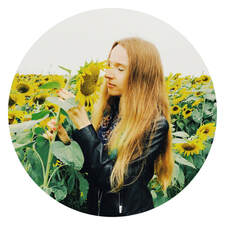 Marissa has been drawn to the world of aromatics and plants since she was a child. Certified in aromatherapy, Reiki, and meditation, she actively changes lives using these healing practices. Additionally, she is a holistic life coach, and works towards helping others heal while simultaneously getting in touch with their spiritual side. As Herbstalk's Market Manager & Community Engagement Assistant, Marissa draws upon years of experience to oversee vendor relations, event management, and social media outreach. As a longtime attendee and member of the Herbstalk community, she is beyond thrilled to be a part of the team! by Marissa Ranahan The arrival of March comes with the promise of spring. As we mark the beginning of the new season, many of us celebrate Ostara’s rejuvenating energy. What is the History of Ostara? Little is known about the origins of Ostara. According to some historians, Ostara is an ancient Saxon and Celtic holiday celebrating Eostra, the fertility goddess. Many pagans believe Ostara symbolizes the day where Mother Earth and the Sun God were married. To honor this belief, pagans will make offerings to the sun and earth as a symbol of their sacred union. How Can I Celebrate Ostara? Depending on your spiritual practice, there are many ways to celebrate Ostara. Below are a few ideas to help you get started: Decorate Your Ostara Altar. The best way to decorate your altar is to use mementos that represent the spring season—especially those with bright colors. This includes spring flowers (such as tulips), stuffed rabbits, and dyed eggs. Another popular choice is to include seeds you’re going to plant during this time so they can be blessed by the holiday. Practice an Earth Meditation. Ostara is all about connecting with the new season. Practicing an earth meditation outside is the perfect way to connect with Mother Nature. To do this, find a quiet spot (the woods is preferred) and listen to the noises around you. Take in the sound of the birds, trees, and spring air. Bless Your Garden. Ostara is the time for planting new seeds. To evoke a healthy harvest, try saying this blessing over your garden beds: The earth is cool and dark, and far below, new life begins. May the soil be blessed with fertility and abundance, with rains of life-giving water, with the heat of the sun, with the energy of the raw earth. May the soil be blessed as the womb of the land becomes full and fruitful to bring forth the garden anew. What Herbs Are Used to Celebrate Ostara? There are a number of herbs used to celebrate Ostara, including: Lavender. Aside from its beautiful smell, lavender represents the ushering in of spring. Those celebrating Ostara typically place lavender branches in vases to make their house smell fresh. You could also use lavender petals in a cleansing bath to welcome in the holiday. Rose. One of the more gentle flowers, rose is a lovely herb to evoke calmness during your ritual. The best way to use rose is by making herbal tea. Sipping on rose tea throughout the day will serve as a gentle reminder of spring energy. You can find a delicious Ostara/rose tea blend here. Lemongrass. Not only will the smell of lemongrass evoke happiness, but it’s also a great scent to set Ostara’s mood. Since lemongrass is a cleansing herb, it’s perfect to use for purifying your altar. Before placing your objects down, clear the space using a little bit of lemongrass oil. Final Thoughts on Ostara This holiday, take time to honor the spring season. To do so, observe nature’s magical ability of rebirth during this time. Consider contemplating your own rebirthing process—and how you want to transform during the springtime. Regardless of how you practice, remember to honor yourself and the season. 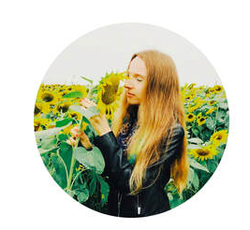 Marissa has been drawn to the world of aromatics and plants since she was a child. Certified in aromatherapy, Reiki, and meditation, she actively changes lives using these healing practices. Additionally, she is a holistic life coach, and works towards helping others heal while simultaneously getting in touch with their spiritual side. As Herbstalk's Market Manager & Community Engagement Assistant, Marissa draws upon years of experience to oversee vendor relations, event management, and social media outreach. by Marissa Myers As hard as it is to believe, springtime is almost here. Even if it feels far away, the festival of Imbolc is just what we need to welcome in spring’s vibrant energy. What Is the History of Imbolc? In between the middle of the Winter Solstice and the Spring Equinox lies the Celtic festival of Imbolc. Dating back to pre-Christian times, Imbolc celebrations revolved around the Goddess Brigid. Ancient Celtic mythology explains that she was born with a flame in her head and immediately drank the milk of a mystical cow upon birth, which is where her common symbols of a flame and dairy originated from. She also represents fertility, and many women would travel to her sacred wells (the most popular one in Kildare, Ireland) to drink their water in hopes of conceiving shortly after. During Imbolc celebrations, those celebrating would light bonfires and make dairy-rich meals in honor of Brigid. Now, Imbolc coincides with Saint Brigid’s feast day. Historians have shown that when Christianity was spreading throughout Ireland, the church was having a difficult time convincing pagans to let go of their gods and goddesses. Thus, Brigid was “reborn” into Saint Brigid, and her representations (i.e., fertility, the flame, and dairy farmers) were kept the same. How Can I Celebrate Imbolc? Depending on your own spiritual practice, there are a variety of ways to celebrate Imbolc. Below are a few ideas to help get you started: Set Up Your Imbolc Altar. Like many Sabbats, an altar plays a large role in your Imbolc celebration. Since the holiday is centered around Brigid, incorporate her colors (red and white) onto your altar. This can be done in the forms of flowers, fabrics, or crystals. It’s also recommended to incorporate candles around the altar, symbolizing Brigid’s flame and bringing light into the winter darkness. Make Brigid’s Cross. One representation of Brigid is the goddess’s cross. By creating this cross, you’re welcoming her into your home for the upcoming spring season. It’s also said to protect your home from future fires or destruction. A tutorial on how to create your own cross can be found here. Cook an Imbolc-Inspired Dinner. Since Brigid is the guardian of the hearth and home, it’s best to celebrate with foods that honor just that—including loaves of bread, grains, and dairy products. Check out these Imbolc-inspired recipes for feast ideas. What Herbs Can I Use to Celebrate Imbolc? There are a number of herbs used to celebrate Imbolc. Take a look at a few common ones listed below. Bay Leaves. Bay leaves have long been associated with the fire element. In traditional Imbolc rituals, they have been used as an offering to the sun. By carrying around bay leaves, it can bring you prosperity for the upcoming season. Consider writing down your future goals and intentions, and placing your bay leaves in a spell jar. This way, they’ll serve as a reminder for your future intentions. Rosemary. Similar to bay leaves, rosemary is a herb that has a connection to fire. For spellwork, rosemary is an excellent herb to use for cleansing or purification purposes. A common cleansing ritual includes adding rosemary to your bath. You can also incorporate rosemary into your Imbolc feast by adding it into recipes. Heather. This beautiful feminine herb evokes both fertility and the divine feminine within. This is a wonderful herb to use for fertility spells or outer cleansing—similar to rosemary. However, heather can be difficult to find. For convenience purposes, use heather tea bag leaves in your Imbolc ritual. Final Thoughts on Imbolc During the holiday of Imbolc, be sure to tend to your own inner flame. To do so, practice the rituals listed above and celebrate spring’s upcoming light. Regardless of how you practice, make sure to honor yourself and the season. 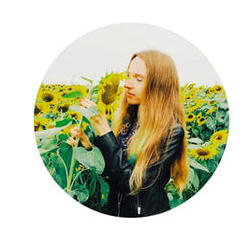 Marissa has been drawn to the world of aromatics and plants since she was a child. Certified in aromatherapy, Reiki, and meditation, she actively changes lives using these healing practices. Additionally, she is a holistic life coach, and works towards helping others heal while simultaneously getting in touch with their spiritual side. As Herbstalk's Market Manager & Community Engagement Assistant, Marissa draws upon years of experience to oversee vendor relations, event management, and social media outreach. by Marissa Myers The days are getting shorter, the weather is getting colder, and the magic of Yule is in the air. It’s the time of year that calls us to examine our intuition, showing us what needs to be brought out of the darkness and into the light. What is the History of Yule? Marking the first official day of winter, Yule (or Winter Solstice) is celebrated by pagans around the world, and is the shortest day of the year. In the 16th century, most Yule celebrations included merriment and festivities within the community. These celebrations included feasting, drinking, and dancing around the Yule tree. In Scandinavia, for example, a traditional Yule feast would last for 12 days and participants would take part in burning the Yule log. In modern day solstice celebrations, pagans and druids gather around spiritual landmarks (i.e., Stonehenge, Newgrange, etc.) to celebrate the holiday. How Can I Celebrate Yule? Depending on your individual practice, there are a variety of ways to celebrate Yule. The most common include the following: Build a Yule Altar: A large part of celebrating Yule is centered around the altar. The main purpose? To honor the sun’s return. That said, it’s important to have something that symbolizes the sun, such as candles or a bright piece of cloth. It’s also a good idea to fill your altar with pinecones, fir, mini wreaths, and a small Yule log. Everything on the altar should represent the sun and winter. Create a Yule Wreath: A wreath composed of pine, evergreen, or fir is the perfect way to ring in Yule. Many pagans forage their own supplies from the woods, and build wreaths to honor the earth’s winter abundance. Decorate a Yule Tree: Most families have likely decorated a Christmas tree before, but in ancient pagan traditions, a Yule tree was decorated outside with candles. Similar to a Yule altar, candles were meant to symbolize the sun as well as passed loved ones. If you have trees outside your home, consider brightening up your yard by (carefully and safely) placing a few candles on them. Celebrate with Candles: Since the solstice is the shortest day of the year, it’s important to have light sources in the evening. For many, taking a plethora of candles and putting them into a shape (such as the sun or another sacred pattern) help welcome in the holiday. What Herbs and Plants Are Associated With Yule? Like many holidays on the Wheel of the Year, certain herbs play an important role in each Sabbat. For Yule, here are a few herbs that can add a little magic to your day: Cinnamon: Known for its warming properties, cinnamon is a wonderful herb to incorporate into your celebration. Consider sprinkling cinnamon over Yule desserts, or adding a little into your coffee to see what symbols appear. Vanilla: Acting as a representation of comfort and seduction, vanilla is the perfect herb to add to your kitchen witchcraft. The best way to do so? By adding vanilla to your recipes. Try making desserts or teas that have hints of vanilla for added comfort. Bay Laurel: In Roman cultures, bay laurel represented Apollo, God of the sun. With Yule also celebrating the sun, it’s no wonder this herb appears in many Yuletide traditions. Take some bay laurel and spread it on your altar for good luck and light. Rue: Known as a highly magical herb, rue is great for protection and magical spells. It’s also a good herb to use for banishing things that are no longer needed in your life. As you enter into Yule, consider placing rue leaves in satchels and carrying them around with you for comfort. Final Thoughts on Yule: When celebrating Yule, remember to choose the rituals that resonate with your tradition. While there are a number of ways to honor the sun and winter, focus on whichever practice speaks to you. Honoring your inner work is an important part of the practice. Whether it’s cooking, creating your altar, or decorating your Yule tree, take time to recognize what your inner self enjoys!  Marissa has been drawn to the world of aromatics and plants since she was a child. Certified in aromatherapy, Reiki, and meditation, she actively changes lives using these healing practices. Additionally, she is a holistic life coach, and works towards helping others heal while simultaneously getting in touch with their spiritual side. As Herbstalk's Market Manager & Community Engagement Assistant, Marissa draws upon years of experience to oversee vendor relations, event management, and social media outreach. As a longtime attendee and member of the Herbstalk community, she is beyond thrilled to be a part of the team! by Marissa Myers The leaves have fallen, the air is crisp, and the mist has filled the early mornings. It’s the time of the year when the earth slowly “dies” and transitions into its winter slumber. For those celebrating Samhain, it’s a time to connect with the dead and honor those who have passed. The veil is thin, and the other side is calling for us to awaken the connection. What is the History of Samhain? Samhain is a pagan festival originating from Celtic spirituality. Known as a halfway point between the fall equinox and the winter solstice, it’s celebrated from October 31st to November 1st to welcome in the darker half of the year. Those who celebrate believe that the physical world and the spirit world are intimately connected, and Samhain brings the Otherworld the closest it’s been all year. In Druidic traditions, priests would light a fire to a wooden wheel, igniting a large flame. The wheel, according to the Druids, represented the sun’s energy. Those around this fire would take the flame back on a candle stick to light their own hearths, bringing light into the darkness. Storytelling around Samhain is another ancient tradition that continues today. A common Celtic tale told during Samhain includes “The Second Battle of Mag Tuired,” which portrays a battle between evil oppressors and the Celtic pantheon. Another tale, “The Adventures of Nera,” illustrates Nera entering the Otherworld while encountering corpses and faeries. How Can I Celebrate Samhain? Depending on your individual practice, there are a variety of ways to celebrate Samhain. The most common include the following: Decorate Your Altar: Using the colors of the season is a wonderful way to brighten up your altar. Samhain colors include a combination deep purples, burgundy, dark oranges, and black. Many people choose to cover their altar with dark clothes and dark colored candles, welcoming in the night of the spirits. If you’re looking to connect deeper with the dead, consider adding skulls or ghost figures to your altar. Carve Pumpkins: Carving pumpkins is a kid-friendly activity that’s fun for everyone. Gather a few pumpkins and carve some creative, funky designs. If you’re able to get smaller pumpkins or gourds, place a few on your altar. This is another simple way to evoke a mini Samhain celebration. Create a Prayer Circle: Since Samhain is all about connecting with our ancestors and honoring the dead, picking out a few prayers lets those who have passed know that you’re keeping their memory alive. A simple prayer could be as follows: With the gift of remembrance, I remember all of you. You are dead but never forgotten, and you live on within me, and within those who are yet to come. Even if you’re unaware of which ancestors to connect with, it’s okay to be general in your prayers--it’s the thought that counts! Bake Soul Cakes: If you’ve never heard of Soul Cakes, they’re a dessert used as a gift for spirits of departed loved ones. Pagans would bake these cakes and place them on their altars so their ancestors could access a yummy treat. But don’t worry, they’re not just for the dead! Those celebrating can also enjoy this delicious dessert. A great recipe for Soul Cakes can be found on this website. And if your spiritual tradition doesn’t include celebrating the dead, consider baking pumpkin bread, another common Samhain dessert. What Herbs and Plants Are Associated With Samhain? Like many holidays on the Wheel of the Year, certain herbs play an important role in each Sabbat. For Samhain, here are a few herbs that can add a little magic to your day: Rosemary: During Samhain, rosemary is a symbol of remembrance. Many pagans choose to use rosemary on their altar as a representation of their ancestors. Rosemary is also okay to use as an incense, so don’t hesitate to cleanse your altar with this gentle herb. For a magickal use during Samhain, hang rosemary bundles in front of your front door to keep harmful spirits from entering. If you have someone in your home who’s sick during Samhain, mix rosemary leaves with juniper berries to promote a healthy healing process. Chrysanthemums: Commonly used as a symbol of protection, chrysanthemums are also heavily associated with the spirit world. Traditionally, they’ve been used as a centerpiece for funeral floral arrangements or placed on new graves. Putting a bouquet of chrysanthemums in your home is a good way to remember those who’ve passed. Mugwort: Mugwort is a magickal herb associated with treating depression. Samhain can be a hard holiday for those suffering from the darkness of mental illness. To help, make a set of smudge sticks with mugwort to use in your ritual to cleanse your aura. You can also place mugwort under your pillow to promote gentle, restful dreaming. (*Please note, mugwort does not cure depression. Please talk to your medical provider for proper treatment for mental illness). Rowan Berries: In Scotland, rowan berries were used to ward evil spirits away from the home. During Samhain, hang these berry branches over your doors and windows to keep spirits at bay. Since Samhain has a lot of spirit activity, this will help keep your home full of good energy. Final Thoughts on Samhain When celebrating Samhain, remember to choose the rituals that resonate with your heart. While there are a number of ways to honor the dead, focus on whichever practice speaks to you. Honoring our ancestors is an important practice. Whether it’s baking, creating our altar, or decorating the home, take time to recognize the earth’s “death”—and slow rebirth—on this special day!
We are thrilled to bring back our “Meet the Herbalist” series where we feature our Herbstalk community members. This month it’s an honor to highlight Joye Williams of Joyfully Natural who has been a beloved vendor and teacher over the past several years at Herbstalk events. Enjoy our interview together and check out her website at www.joyefullynatural.com or connect with her on Instagram @joyefullynatural. You can also catch her class, “A Community Discussion on Natural Products” at the upcoming Virtual Herbstalk on Aug. 29th. Thank you for sharing with us, Joye! Can you tell us a little bit about how your herbal work began, Joye? How did you first get interested in plants or herbalism? 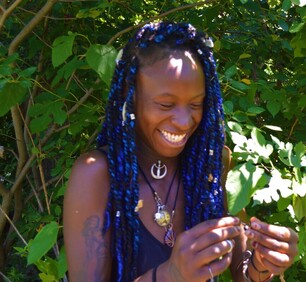 It all started because I was suffering from depression and anxiety. I also had eczema for as long as I can remember. When the pharmaceutical medication I was prescribed wasn’t working for me I learned about meditation. I immediately felt the benefits of focusing on my breath and quieting my mind, and then I came across yoga. It was like meditation exercise! From there I started getting as much information as I could on Eastern Philosophy. As I enhanced my spirituality, my connect with nature became more realized, and I became more familiar with something deep inside me. There, earth magic found me. I began making potions and incenses, learning how nature connects the spirit with the mind, emotions and body. At this time in my life, I was going through a particularly hard time with new and significant experiences, and my eczema went out of control, with large burning welts of the itchy rash. I knew that the depression I felt made my mind anxious and my body inflamed. I decided to turn to nature. I made creams, oils, teas and tinctures, trying to support my mind, emotions, and skin. When my eczema healed and didn’t come back for over year I felt affirmed in the belief that using natural ingredients was for me. So I started making all my everyday products with natural, organic ingredients — toothpaste, deodorant, culinary spices, soaps. And I never looked back. What challenges did you face when you first started your business? Some of the challenges I’ve faced when I first started my journey were navigating where I could get these natural ingredients in my area, and making sure that they were pure and ethically sourced. I also struggled with being a Black woman in this field, where I experienced that there was not a lot of cultural representation that I could find at the time. I also fought with feelings of inadequacy regarding how I was self-taught and didn’t get a certificate from some herbal education system which I couldn’t pay for. I doubted my abilities, my instincts, and felt out of place. I also faced challenges being consistent. Understanding that natural preventative medicine isn’t a quick fix and absolutely requires patience and consistency was tough, being so used to other store brought products. What would you say is the main focus of your work with Joyfully Natural? My main focus is on providing affordable high quality, organic herbal remedies. I also strive to help amplify the diverse work from the cultures in which herbalism thrives, and build connections, resources, and support in my community. I am also focused on bringing a holistic approach to multiple industries, using natural ingredients with environmental protection at the forefront. What advice would you give to budding herbalists? There is no one way to be an herbalist. Let your process be wild and free. Test things, embrace your inner child, be silly, be messy, be adventurous! Nature is our biggest teacher, and if you listen the plants truly give you the answers when you need them. Don’t fall into the trend that is becoming so apparent — don’t do this work because it's popular. In nurturing your relationship with nature, being true to yourself, embracing your flaws, struggles, and fears unapologetically, and finding your own special way to heal is essential. Remember that your healing can look different and that’s perfect. Always research how the herbs are sourced, and pay attention to the effects the harvest has on the environment, and support the environmental protection of the earth that provides this medicine for us. Check out United Plant Savers for the list of at-risk plants, and more information. Are there any non-herbal hobbies or interests that you love doing? I love dancing — mostly in the comfort of my home — as well as interior decorating, taking pictures, thrift shopping, cooking and hosting dinner parties, luncheons, etc. What’s one fun thing that most people don’t know about you? I love using my imagination like I’m an adventurer, and exploring places like abandoned buildings, off-the-beaten path in the woods, mountains, and rock formations at the beaches. What made you want to be a part of Herbstalk? I wanted to be a part of Herbstalk because I wanted to be a part of the opportunity to represent my neighborhood, Dorchester, and my culture in my city. Herbstalk looked like an amazing event with so many herbal resources that I was excited to connect with, but I didn’t see a lot of diversity. And I wanted to represent that diversity and hopefully be a part of expanding diversity and inclusion at these wonderful events. 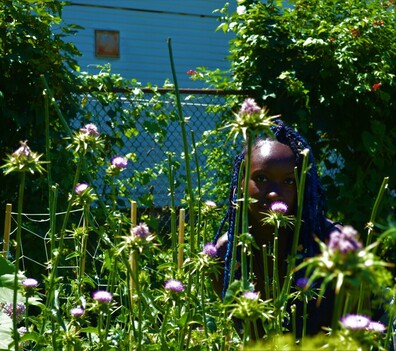 Keep in touch with Joye and shop her products via her website at: www.joyefullynatural.com or connect with her on Instagram @joyefullynatural. Don't forget you can also catch her class, “A Community Discussion on Natural Products” at the upcoming Virtual Herbstalk on Aug. 29th! by Marissa Ranahan With summer days getting shorter, signs of fall are becoming more apparent. Though the weather outside might be a different story, the earth around us shows signs that autumn is near, including grains being harvested, trees dropping their fruit, and the sun setting earlier at night. All of this earthly excitement acts as a doorway, ushering in the pagan holiday of Lammas. What is Lammas? Lammas, sometimes referred to as Lughnasadh, is a time to celebrate the upcoming fall harvest. Depending on your spiritual practice, Lammas can also be (and traditionally is) a day to celebrate the Celtic God, Lugh. In Celtic mythology, he is portrayed as a master craftsman and skilled warrior. It’s no surprise that games and craft fairs were held in honor of his memory. In some Irish villages, members would hold a funeral feast in honor of Lugh’s mother, Tailtiu, who supposedly passed away from exhaustion after clearing Ireland’s plains for the harvest. Baking bread and Lammas are also tied closely together. The world Lammas itself is derived from the old English phrase hlaf-maesse, which means loaf mass. In Ireland, it was good luck to wait until August 1st to pick the first sheaves of grain. By night, the farmer’s wife would rush to cook bread with new grains and make the first loaves to honor the harvest. If you were unable to use newly harvested grain, and had to reach for your previous years’ stash, it meant bad luck for the upcoming harvesting season. Like many sabbats, gratitude remains at the center of any holiday. It’s important to remember that by celebrating the harvest’s abundance, we are celebrating our ancestors and their survival efforts. It’s a good time to cultivate gratitude for our food and farmland, and the blessings the land provides for sustaining humankind. How Can I Celebrate Lammas? Depending on your culture or individual practice, there are a variety of ways to celebrate Lammas. The most common ways including the following: Decorate your altar: Using the colors of the season is a sacred way to honor Lammas. This includes a combination of oranges, reds, and dark yellows. Additionally, symbols of the harvest season, such as sickles and scythes, are placed on altars. These are accompanied by dried grains to celebrate the start of the harvest season. If you’re looking to brighten up your altar, consider adding sunflowers—the patron plant of Lammas—around its exterior. Practice craftsmanship: Because the holiday is associated with the God Lugh, craftsmanship is a heavy theme that’s been carried on for centuries. Whether it’s painting, singing, or playing an instrument, Lammas is the perfect opportunity to learn a new craft or build on an old hobby. And don’t forget to share your new (and old) gifts with those around you to celebrate! Bake bread: The center of Lammas revolves around baking bread. To have an abundant holiday dinner, bread-making is common across all families honoring the holiday. It’s the perfect way to bring families together to celebrate the harvest and home. Traditional Lammas feasts include each member taking turns breaking bread around the table. Consider doing the same with your family or by yourself. If you need inspiration, try this delicious recipe to create your own herbal-infused Lammas bread! Create a Corn Dolly: Creating corn dollies is an old Lammas tradition that has carried into modern day. To make your own, use stalks of wheat, barley, or rye if you have access to these plants. Using yellow ribbon, lace the stalks into a corn dolly to outline the shape of a woman. During the doll creation process, express gratitude and thanks for your harvest. Place your corn dolly onto your Lammas altar as the center of celebrations. At Samhain, the pagan holiday marking the end of the harvest season, take the remains of your corn dolly from the altar and return them to the earth. This is symbolic of sowing seeds of a future harvest for the following year. What Herbs and Plants are Associated with Lammas? Like many holidays on the Wheel of the Year, certain herbs play an important role in each sabbat. For Lammas specifically, here are a few herbs that can add a little magic to your day: Yarrow: Yarrow has taken on different meanings and symbolism throughout the centuries. It’s been known to be a herb that casts away evil spells and hexes. People believe that stringing it across the doorway will prevent evil spirits from entering their home. To use yarrow in your own Lammas practice, place it around your neck as a form of protection. Goldenrod: The bright happiness of goldenrod has an infectious energy for anyone who practices with it. Its uplifting nature has been known to help those with depression and grief. If you’re feeling overwhelmed this holiday season, consider using goldenrod on your altar to brighten the atmosphere—and your spirits, too. Vervain: The use of vervain can be traced back thousands of years for its role in spiritual and ceremonial services. In the Druidic tradition, many members believed vervain had supernatural powers to assist in getting in touch with the other side. Common vervain-based traditions during Lammas include healing rituals for those who need spiritual assistance. Use vervain essential oil as a blessing for your loved ones who need an extra health boost. Meadowsweet: Also known as Bride of the Meadow, meadowsweet is another sacred herb of the Druids. Members would wear garlands made of meadowsweet around their neck during Lammas celebrations. If a Druidic wedding was taking place on Lammas, meadowsweet would be added to the bride’s bouquet. If you feel called to it, wear meadowsweet around your neck to honor the ancient tradition. Mint: Another herb close to the Druids, mint is known for its healing and protection powers. During Lammas, mint was used to attract abundance into one’s life. One of the best ways to use mint during Lammas is during a tea ritual, such as making a drink that includes mint leaves. This is a great way to honor your body and bless it with seasonal health. Final Thoughts on Lammas: When celebrating Lammas, remember to choose the rituals that resonate with your heart. While there are a number of ways to honor the harvest, choose whichever practice you deeply connect with. Taking time to honor our earth and her abundance is important. Whether it’s baking bread, going on a walk, or meditating in the morning, take time to recognize the earth’s abundance—and magic—on this special day. 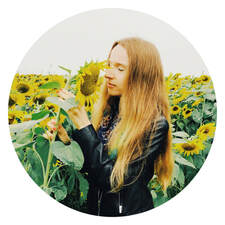 Marissa has been drawn to the world of aromatics and plants since she was a child. Certified in aromatherapy, Reiki, and meditation, she actively changes lives using these healing practices. Additionally, she is a holistic life coach, and works towards helping others heal while simultaneously getting in touch with their spiritual side. As Herbstalk's Market Manager & Community Engagement Assistant, Marissa draws upon years of experience to oversee vendor relations, event management, and social media outreach. As a longtime attendee and member of the Herbstalk community, she is beyond thrilled to be a part of the team! |
Archives
November 2023
Categories
All
|
Join the Newsletter!
Receive news about future Herbstalk events
Thank you!
You have successfully joined our subscriber list.
Copyright © Herbstalk 2024
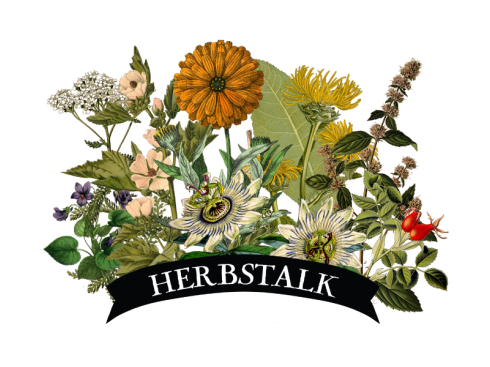
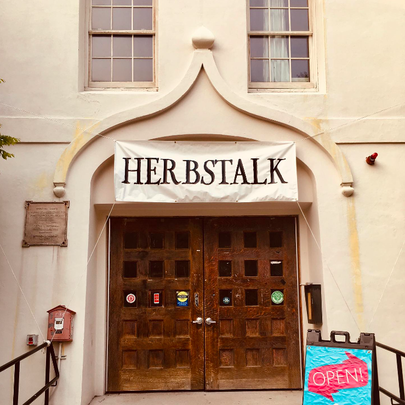
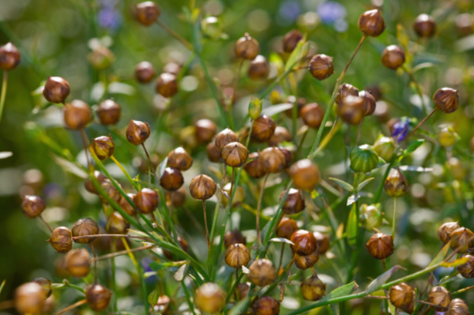
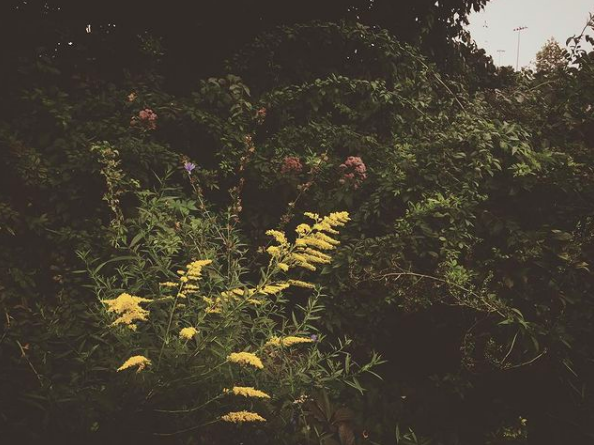
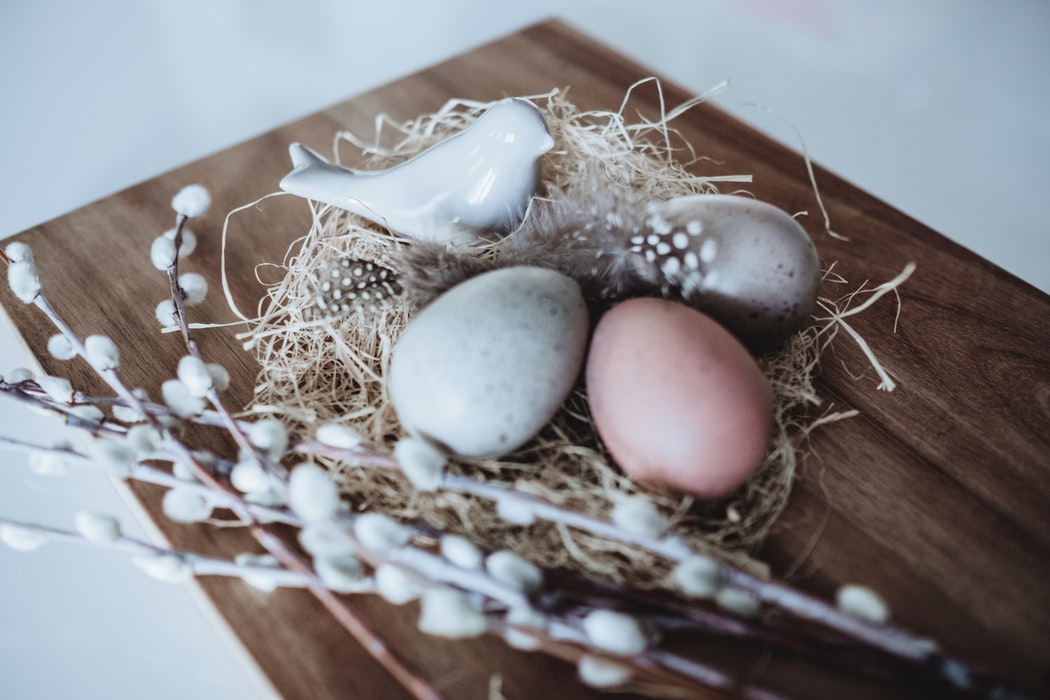
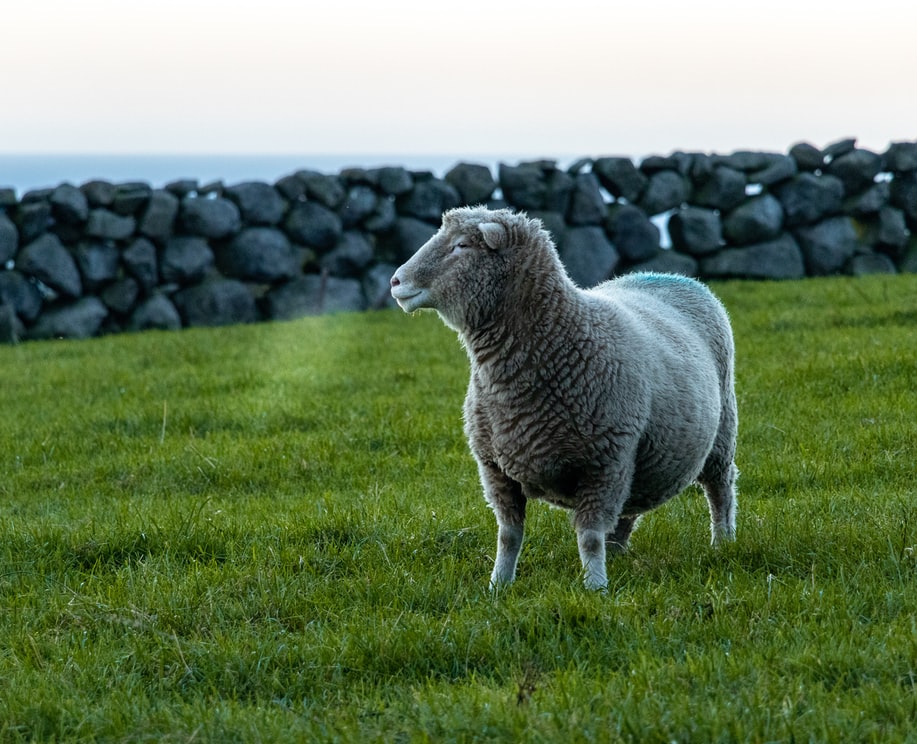

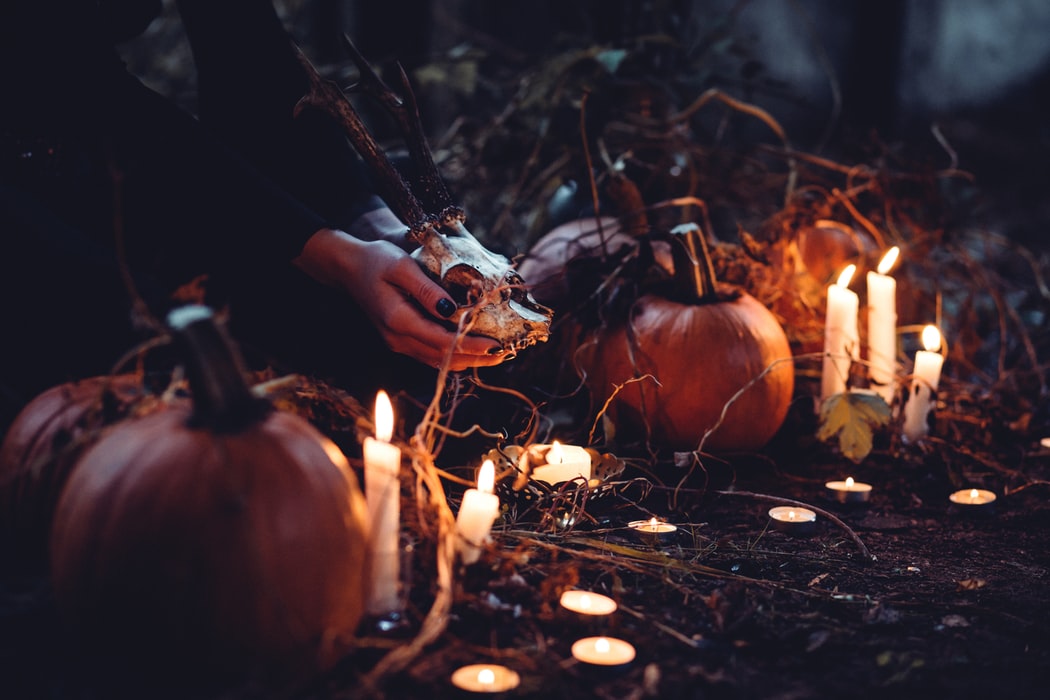
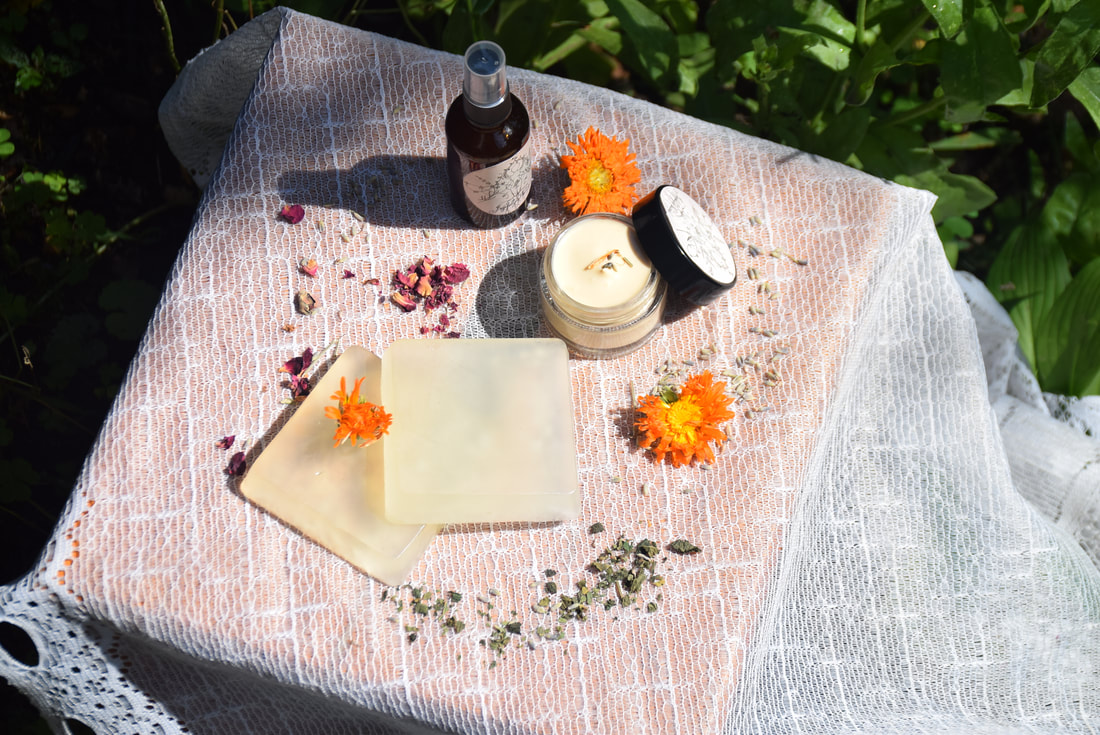

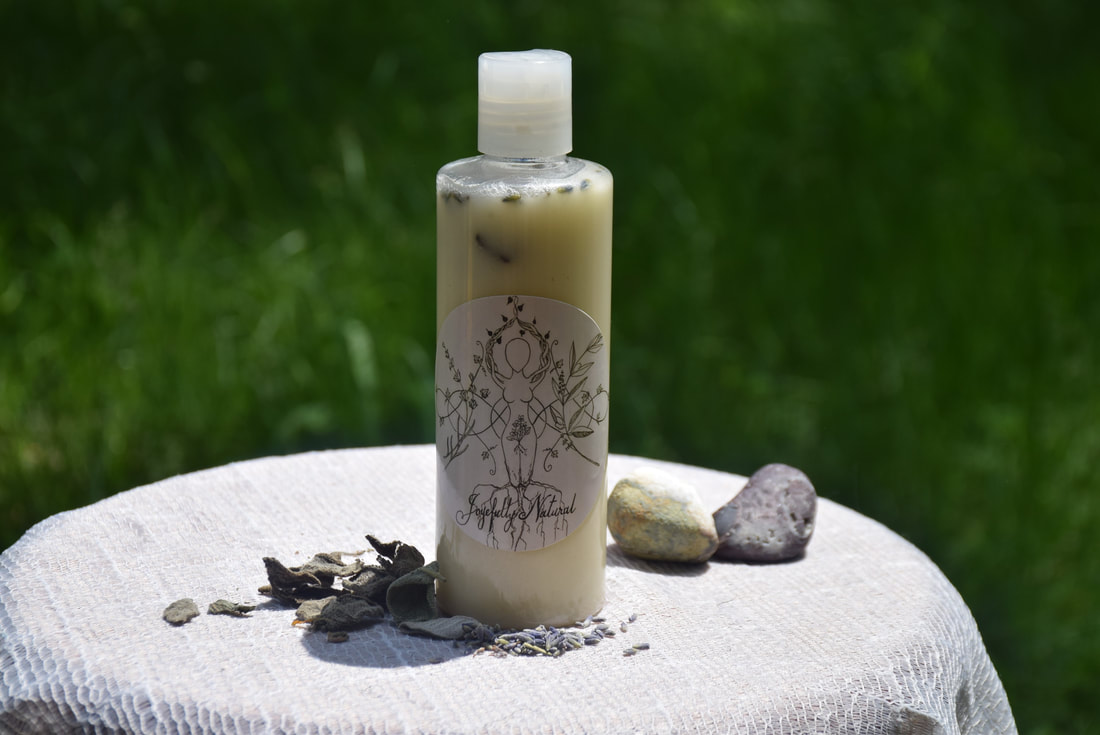
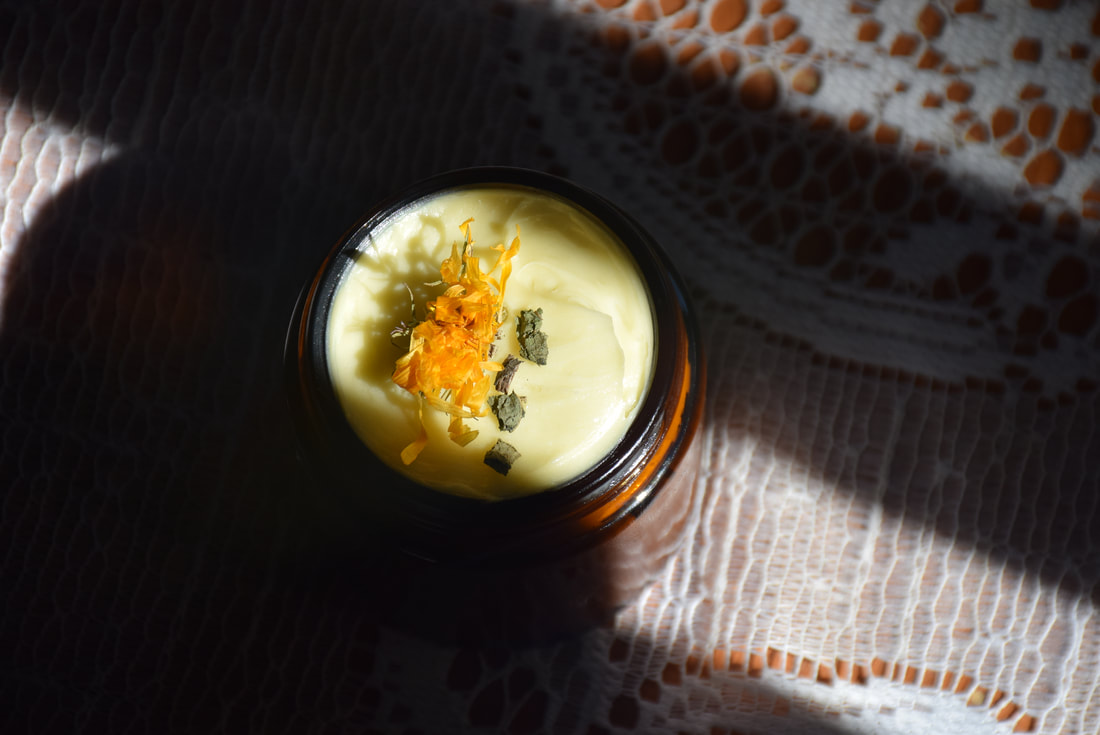
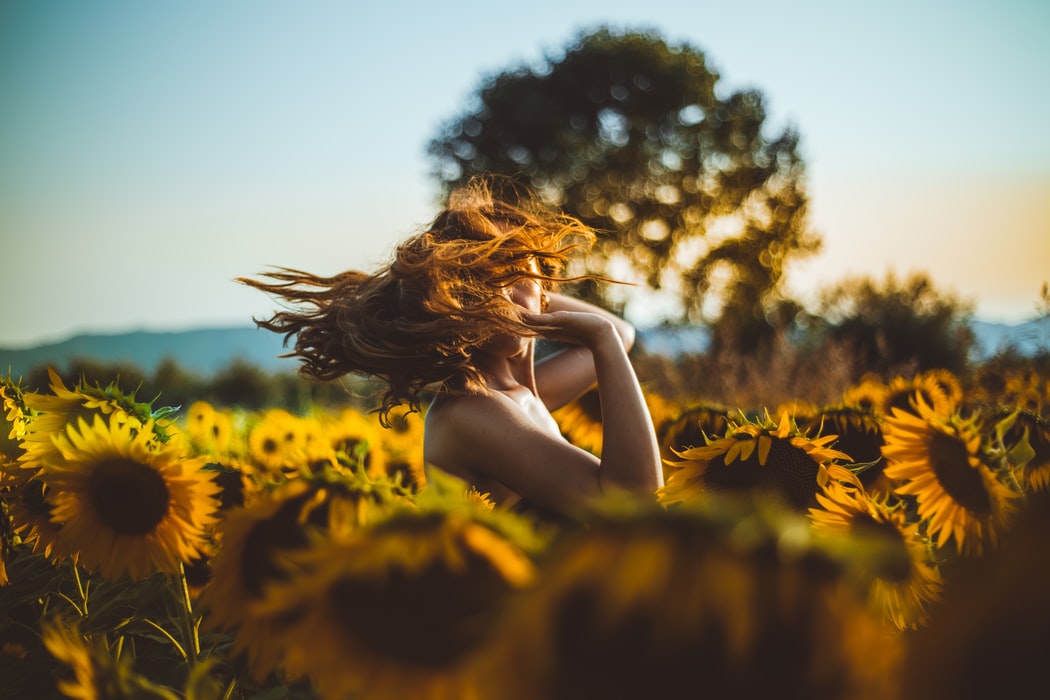
 RSS Feed
RSS Feed